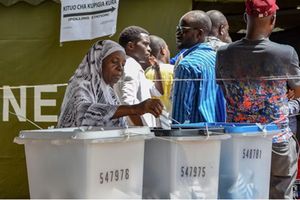Govt trains more doctors than it can employ: study

Doctors conducting an operation. Photo | file.
What you need to know:
This is happening even as the country’s doctor to patient ratio of 1:25,000 falls far short of WHO guidelines
Dar es Salaam. The government is producing more medical doctors than it can absorb in its hospitals, a study by healthcare planners revealed yesterday.
Over 60 per cent of medical graduates who were trained locally and abroad were not recruited to cover the shortage of doctors in most State-run health facilities.
The researchers analysed data showing the output of medical graduates in Tanzania over ten years, warning yesterday at the 4th Muhimbili Health and Allied Sciences (Muhas) Scientific Conference in Dar es Salaam that the government needed to address the matter urgently. According to the findings, only 14 per cent of those who were not employed by the government managed to find full-time jobs in private hospitals. But the rest, according to the lead researcher, Dr Nathanel Sirili, cannot be accounted for.
Going by the figures of the medics who have been trained over ten years, it was estimated that the government may have lost over Sh68.3 billion by training the medics it did not absorb.
However, another researcher, Dr Masawa Nyamuryekunge was skeptical of the findings. “What if these 60 per cent doctors who cannot be accounted for, are now serving in the health sector but in private settings?’’ he queried.
From 2001 up to 2010, a total of 2,248 doctors graduated from medical universities locally and abroad. According to estimates, 1,160 of them cannot be accounted for. They are neither employed in private nor in public health facilities in the country, researchers told The Citizen.
Presenting a paper on the matter yesterday, Dr Sirili said that the cost of training one doctor, meaning the government had incurred a “big loss” over the years. “The cost of training one doctor is estimated at $25,000 (Sh55 million) for an entire five year course. These findings are telling us that the government lost billions on training the doctors it could not absorb,’’ argued Dr Sirili.
The new findings appear to be ironical because it has been widely argued that Tanzania suffers a shortage of doctors in its public hospitals and the problem was attributed to lack of trained medical doctors. Currently, a doctor in Tanzania serves 25,000 patients, a long way from attaining the World Health Organisation (WHO) proposed doctor to patient ratio of 1:10,000 for developing countries. The ministry of Health, Community Development, Gender, Children and the Elderly said recently that it could not deploy over half of the licensed doctors in health facilities across the country and put them on its payroll.
Minister Ummy Mwalimu told The Citizen that about 400 out of an estimated 1,000 young medics were to be absorbed in the next financial year alongside a general batch of 10,000 health workers who have been put on the plan.
She said “The Wage Bill is the determining factor. However, the total recruitment for the Health Sector is 10,000 workers,’’ she noted during an exclusive interview with The Citizen recently.
However, the young doctors, most of whom graduated in 2014, have been seeking audience with the government over the matter and they filed a report, giving reasons why they believed they should urgently be employed. “Considering the dire need for doctors here, it might sound mind-boggling to let those doctors set off for greener pastures abroad while there is scarcity in the country,’’ reads part of their report signed by a leader, Dr Wilson Lugano.




